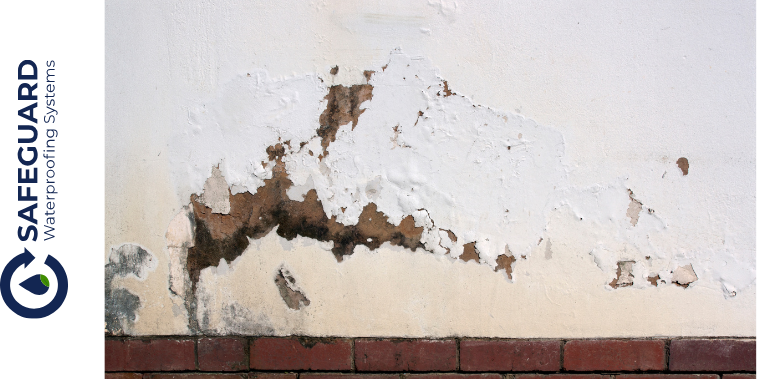Rising damp is a form of moisture that moves upward through walls and floors by capillary action. It’s common in older buildings and can lead to significant structural and health issues if not treated.
Lack of a Damp-Proof Course (DPC):
Many older buildings were built without a DPC, a barrier designed to stop moisture from rising through masonry.
Failure or Damage to the DPC:
Cracks, bridging or chemical breakdown can cause an existing DPC to become ineffective over time.
Bridging of the DPC:
This happens when moisture bypasses the barrier.
Porous Building Materials:
Bricks, mortar or stone with high porosity can easily absorb ground moisture if unprotected.
Poor Drainage Around the Building:
Water collecting around the base of a building due to poor drainage can increase the amount of moisture available to rise.
High Ground Water Table:
In areas where the water table is naturally high, there is more moisture pressure pushing water up into the building materials.

Damp patches on walls, especially from ground rising up the wall
Peeling & blistering paint or wallpaper
Tidemarks or efflorescent salt deposits
Damp & musty smell
Rotting skirting boards

Install a New Damp-Proof Course (DPC):
Chemical injection DPC is a more modern method where a silane/siloxane-based cream or rod is injected into the base of walls to form a new waterproof barrier.
Remove and Replace Damaged Plaster:
Salt-contaminated plaster should be hacked off up to at least 300 mm above the highest point of contamination.
Use Safeguard’s salt-retardant additive (Renderguard Gold) to replaster the walls.
Where necessary, the contaminated wall must be tanked with a cementitious slurry before replastering.
Safeguard’s Dryzone Patented DPC Cream:
This is the world’s No. 1, highest-strength DPC cream used by contractors worldwide to treat rising damp.
For forty years at the forefront of research and development in chemical DPCs has resulted in Dryzone Damp-Proofing Cream.

Due to its advanced formulation, reliable performance, and ease of application, here’s what sets it apart:
Designed to combat rising damp, Dryzone has been extensively tested and proven to deliver long-lasting protection.
High Strength is Best
When considering a chemical damp-proof course, ensure that the cream is a high-strength silane/siloxane formulation.


Contact Us 011 7083603
Email techncal@safeguardchem.co.za